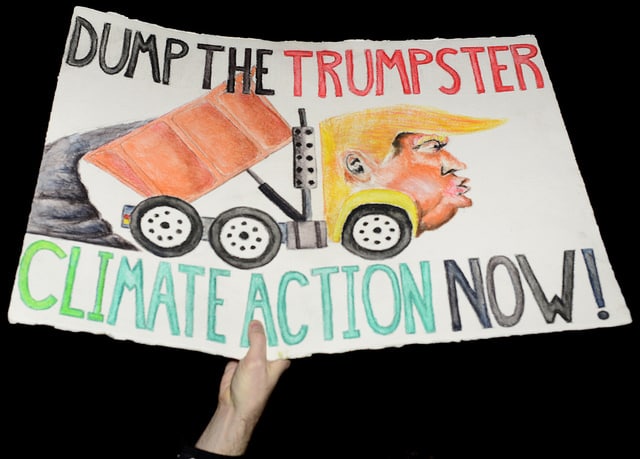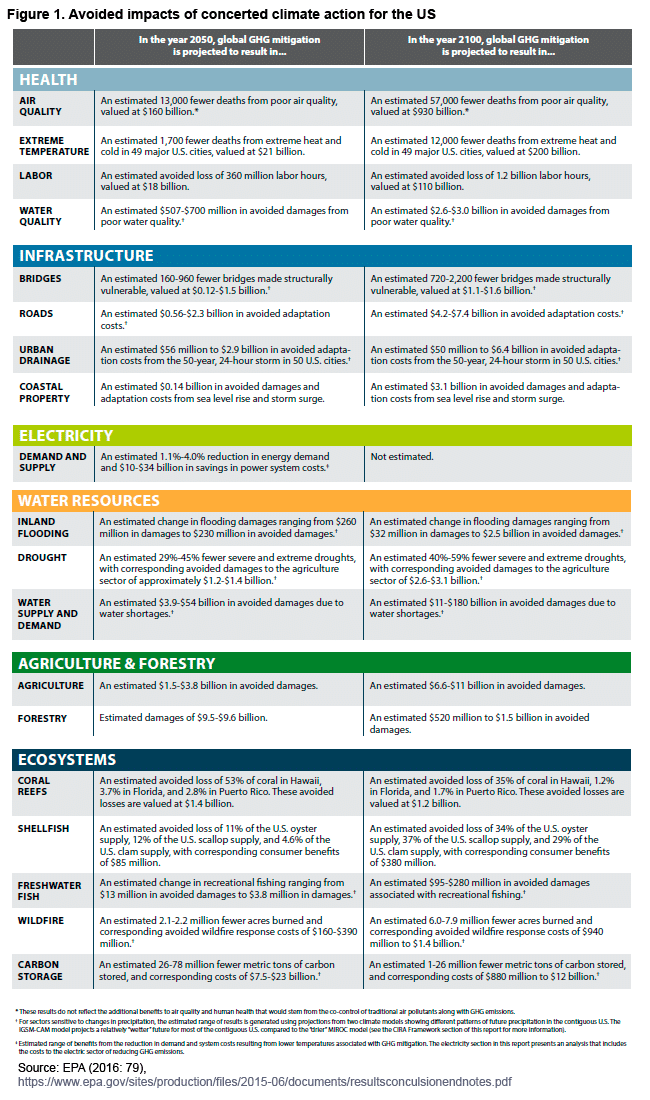
The US is the second largest greenhouse gas emitter with 14.4% of global emissions in 2012, after China (25.36%) and followed by the EU (10.16%) (note the data exclude emissions from Land-Use Change and Forestry in addition to excluding greenhouse gas emissions from bunker fuels). As climate change is a market failure of planetary proportions, tackling it requires countries to cede some of their national sovereignty in order to engage in concerted climate action.
However, the Trump presidency will, in all likelihood, reverse, to a greater or lesser degree, American international climate negotiating efforts. One of the reasons for this reversal is arguably to avoid losing its national sovereign powers, even if the current climate regime has been designed to suit American circumstances (i.e. circumvent the US federal gridlock) and is legally binding largely on procedural issues.
Trump’s neo-Jacksonian approach to climate change, threats of withdrawing from the Paris Agreement, of stopping payments to international climate programs and of dismantling federal climate regulations, might be tempered by several factors. These include: renewable energy cost reduction trends; citizen support for climate action at home and abroad; the severe consequences unabated climate change will have for the US (with extreme weather events costing over US$ 110 billion in 2012 alone); the growing market opportunities that will come with the sixth wave of innovation (being fuelled by resource efficient technologies and environmental concerns); and a need to engage in global climate policies, if only to protect American people, property and environment.
Current concern about America’s climate policy reversal was ignited by the President’s messages dubbing climate change a ‘hoax’ invented by the Chinese to harm US interests; statement he later nuanced by saying that there might be some anthropogenic component in climate change.
Trump’s climate scepticism is in stark contrast to the statements of the international climate community that overwhelmingly agrees that climate change is happening, that there is a clear anthropogenic component and that it is already affecting human and natural ecosystems alike. This is not to say that climate science is settled and that there is no uncertainty. Climate models and Integrated Assessment Models (IAMs) are simplified representations of reality and, as such, are unable to capture all the consequences of climate change. For instance, current climate modelling is unable to capture socially contingent outcomes such as peoples’ displacements, which can be partially fostered by climate change, and conflicts in which climate change can play a role. Likewise, policy making rarely includes the co-impacts (both positive and negative externalities) of climate action. Simplifications and uncertainty on the severity of impacts undoubtedly make the climate action/inaction picture blurry. But by no means do these limitations imply that climate change is not one of the most pressing issues facing humanity today.
The concern about the President’s disdain for climate science has led groups of researchers to call upon global leaders to put pressure on Trump to ensure non-politicised and scientifically based climate policies are implemented and continued support for international climate negotiations persists. Scientists’ concerns have also led researchers in America to make back-up copies of invaluable climate data in private servers, as the US has historically produced world-class climate data. Furthermore, scientists in the US, and elsewhere, are planning demonstrations on Earth Day (22nd of April 2017) to protest against the post factual drift of the current Administration. They have also written open letters requesting respect for science. Concern has been heightened by Trump’s appointment of climate sceptics to lead the Environmental Protection Agency (EPA) transition team (Myron Ebell) and to later head the EPA (Scott Pruitt), in addition to his appointments to lead energy policy (Rick Perry) as well as his appointment of Secretary of State and head of climate diplomacy (Rex Tillerson).
Trump’s first actions as 45th President of the United States have not appeased the international climate community. After eliminating Obama’s climate policies from the White House web, scientists at EPA were informed that before publishing and disseminating their research findings the current Administration had to review those results. They were also told that engagement with the media was restricted. This level of censorship is unheard of in the field.
Since Trump was sworn into office he has announced, through the America First Energy Plan, he would discard Obama’s Climate Action Plan. In the absence of a federal climate action policy, the Climate Action Plan was the overarching climate framework proposed by the Obama Administration to address climate change both at home and abroad. It included carbon emission standards for power plants (the Clean Power Plan), the goal of adapting to climate change and the intention to lead international climate action.
At a national level, the US President has also signed a memorandum to complete the construction of the Dakota Access Pipeline and a memorandum for the construction of the transnational Keystone XL Pipeline, two symbols of the current Administration’s ‘all-of-the-above’ energy strategy. Additionally, the House of Representatives recently repealed the methane rule that limited emissions from oil and gas exploration on US federal land.
Actions by the Trump Administration seem to clash with the widespread perception by the global business community that climate change is one of the most likely risks, and one of the top 5 risks in terms of potential economic impact. Furthermore, the EPA states that globally concerted action can have significant benefits (avoided costs) in 2050 and 2100 for the US, see figure 1 below.

On a more positive note, the economics of renewables in the US are making their installation increasingly attractive across republican and democrat voting states. Investment Tax Credits for solar, geothermal, marine and hydro, and Production Tax Credits for wind power have been extended, with no indication that Trump has any desire to eliminate these support mechanisms at present. The states and cities in America have far-reaching powers to legislate on climate and (some) are actively pursuing deep decarbonisation pathways (see figure 2); businesses are increasingly on board the low carbon transition, with little evidence so far that their climate commitments will be reversed.

There are gains to be made from climate action and investors and countries are betting on the low carbon transition. The EU claims that European businesses could benefit from a burgeoning market for green technologies and for environmental goods and services. China has pledged to become a green technology leader and its investments in clean energy amount to over a third of global investments. The trends in renewable energy costs reductions indicate that the Levelised Cost of Energy for onshore wind and photovoltaic (PV) is on par, or will soon be on par, with that of conventional energy sources in OECD and non-OECD countries alike. Adequate enabling policies for renewables are needed to further push down costs and ensure deployment at the scale needed to limit global mean temperature increases to 2ºC, but the numbers seem to favour investing in renewable power in the future. And, the sixth wave of innovation is one of resource efficiency and sustainability. So, if Mr. Trump truly wants to make America great again, there are arguments for the US to actively engage in the low carbon transition.
Internationally, pulling out of the Paris Agreement will take around four years (three years since the agreement entered into force and one year after depositing the notice of withdrawal). It is nevertheless possible that the Trump Administration will withdraw from the UN Framework Convention on Climate Change, which would take about one year, and would automatically mean the US would no longer be a Party to the Paris Agreement. This, however, makes little sense in climate diplomacy terms. The Paris Agreement was moulded to suit US demands in terms of excluding liability for loss and damage, including less developed countries in putting forth mitigation commitments and limiting legally binding requirements to procedural issues. The political capital employed in achieving the Paris agreement would be forfeited if the US did not follow through in the co-creation of the details of this global commons management regime. Plus, by withdrawing from the international climate regime the US would effectively be excluding itself from what some climate experts call a commercial agreement, rather than a climate agreement. A puzzling strategy for a President that is all for business.
Trump’s first month as President of the United States has been busy in climate terms. The consequences of his climate policy reversal are not expected to derail the upcoming low carbon development model that governments worldwide adhered to when ratifying the Paris Agreement, but uncertainty is not good news for a large-scale energy transition and US proofing the Paris Agreement will be needed. If America is to be made great again, squandering America’s recently regained climate leadership, missing out market and socio-economic opportunities that are expected to arise from co-creating a global commons management regime, and lagging behind in the coming clean technology and energy revolution seem unwise. Should Trump insist in pursuing his Jacksonian approach to climate change, China and the European Union, inter alia, will be looked upon by the international community to lead on.


